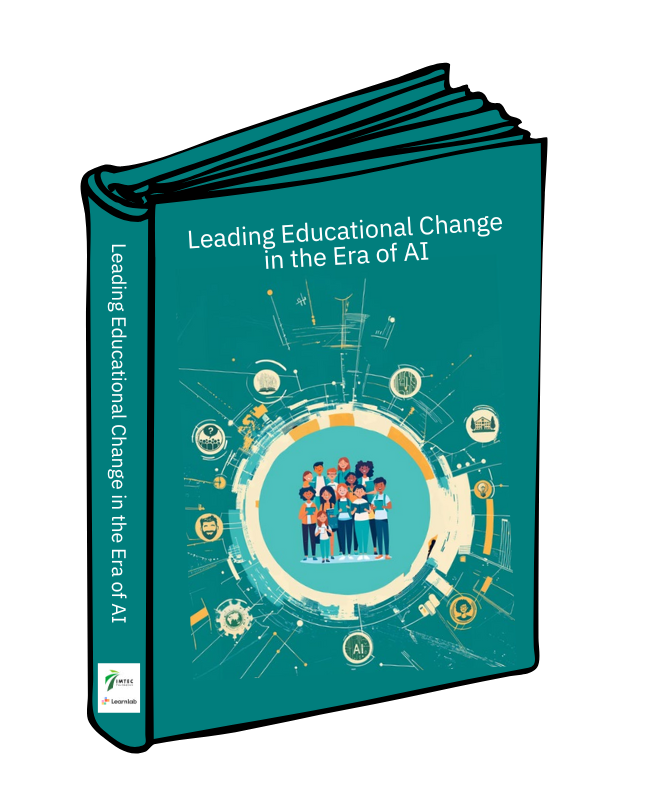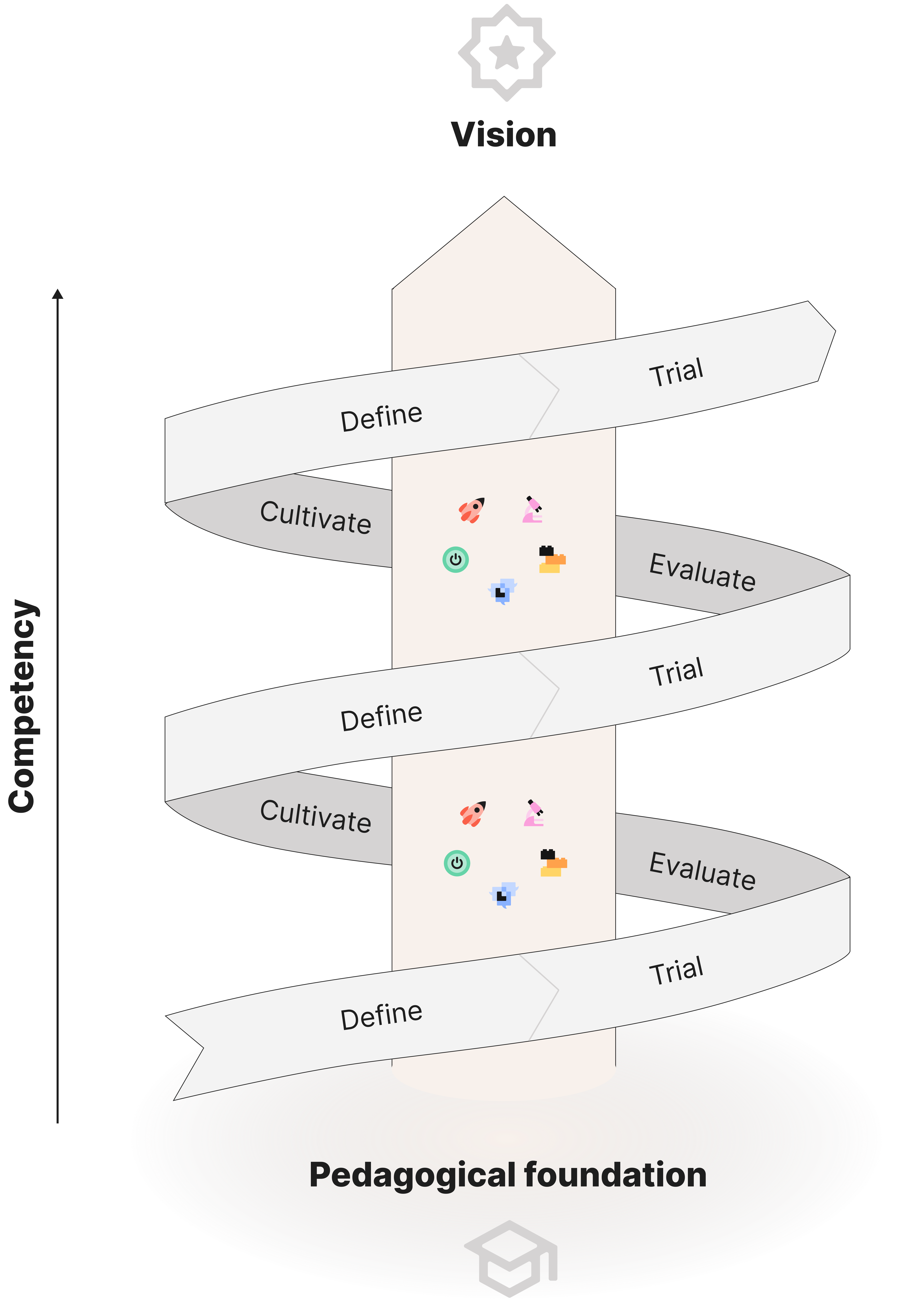

The book “Leading educational change in the era of AI” provides some answers to this question. You can discover how to lead your institution through transformative change, ensuring that pedagogy comes first while AI serves as an ally. The book offers a comprehensive roadmap, blending theoretical insights with practical strategies to foster learning organizations that are future-ready while staying true to their core values. It is advisable to read the theoretical background and corresponding sections before starting any of the sessions below. With that said, you´ll find resources that will help facilitate important activities in the change process designed to be “plug and play”.

The book follows the DTEC model, where the change process is divided into four phases. These phases form a continuous cycle, where each iteration represents one round of improvement. By consistently applying the DTEC model, organizations can gradually enhance their competency and capacity over time. Use the resources below to facilitate important steps in this process. To lead the organization though the phases, a key elements is necessary.
TrustThe Define phase, in which we aim to gain a deeper understanding of where we are, where we want to be and find strategies on how to get there. This chapter aims to help establish a cohesive organization ready for change and improvement.
Introducing the need for learning and change processes, laying the groundwork for moving forward. Leaders seize the opportunity to collaboratively develop a vision that will guide the organization’s operations towards a higher goal, one which is congruent with the pedagogical foundation.
The organization irons out their values and what they believe to foster learner performance (in the widest sense of the word).
Staff collaboratively evaluate the existing conditions to form a comprehensive understanding of the strengths and weaknesses of the organization. Selecting specific aspects for improvement is crucial to focus efforts and resources efficiently if the change process is to have impact.
Here, the organization articulates what the ideal situation would look like for the selected area. Set specific, actionable goals to guide the development of initiatives and to be used to later evaluate the change process.
Prepare relevant data and engage in brainstorming sessions to explore potential actions and solutions. Assess the feasibility and potential impact of the initiatives on daily operations and on how well they align with strategic goals and criteria, ensuring it meets the intended objectives.
In the Trial phase, we look at defining roles and responsibilities, making an action plan to monitor progress accurately. Before trying out the initiatives, there will probably be a need for increasing competency, so that the initiatives are trialled as intended.
Clearly articulate who is responsible for specific tasks. Promote distributed leadership to leverage strengths and foster collaboration. Develop comprehensive plans with specific actions, timelines and responsibilities.
Assess current performance levels identifying gaps in necessary competency for the initiatives to be carried out successfully. Implement new initiatives on a small scale to identify potential issues and gather feedback.
In the previous phase, the focus was on creating an action plan, developing competencies and trialling the initiative in real-world contexts. Throughout these stages, reflections were documented and shared across meetings and collaborative networks, providing a robust foundation of experience and data. In this phase the aim is to gather data from previously and during an evaluation process.
The Cultivate phase, focuses on using insights from the evaluation phase to refine initiatives, enabling their sustainability and effectiveness across the entire organization. This chapter highlights essential actions for cultivating change and becoming a learning organization capable of meaningful, ongoing improvement as part of daily operations.
Embed successful practices into the organizational culture and routines. Phase out practices that hinder desired outcomes from the institutionalized initiatives.
Conduct evaluations on the final ‘product’, assessing the impact of institutionalized practices. Use these evaluations to make informed decisions about continuing, modifying or discarding initiatives.
Foster a culture of continuous improvement by regularly reflecting on practices, seeking feedback and making iterative adjustments. Build strong relationships with stakeholders, districts and other educational organizations, encouraging open communication and shared responsibility for educational outcomes. Stay informed about emerging trends and technologies and plan accordingly. Develop strategies that ensure the organization remains adaptive and forward-thinking, while staying true to core values.